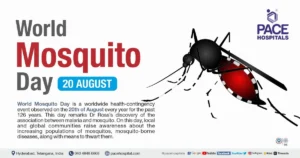World Hepatitis Day 2025: Raising Awareness, Reducing Stigma, and Paving the Path to a Hepatitis-Free Future.
On July 28, 2025, the global health community will come together to observe World Hepatitis Day a day dedicated to raising awareness about the global hepatitis epidemic, the importance of prevention, testing, and treatment, and promoting the elimination of viral hepatitis. At BG Pharma and Healthcare Ltd, we are committed to fighting against the burden of hepatitis, a disease that remains one of the most significant global health challenges, yet is often overlooked. This blog post aims to provide insight into hepatitis, its types, the steps toward elimination, and the ongoing efforts to combat this disease.
Understanding Hepatitis: A Global Health Issue
Hepatitis refers to inflammation of the liver, most commonly caused by viral infections. While the liver can regenerate, chronic hepatitis can lead to serious complications such as cirrhosis, liver failure, and liver cancer. Hepatitis is caused by five primary viral types: Hepatitis A,B,C,D, and E. Among these, Hepatitis B and Hepatitis C are the most prevalent and pose the highest risk to global health.
According to the World Health Organization (WHO), an estimated 325 million people worldwide are living with chronic hepatitis B and C, and the disease claims approximately 1.4 million lives annually. Despite the availability of effective vaccines, treatments, and prevention strategies, the stigma associated with hepatitis, lack of awareness, and limited access to healthcare continue to hinder global efforts to control and eliminate the disease.
Types of Hepatitis
1. Hepatitis A:
Cause: Hepatitis A is a liver infection caused by the Hepatitis A virus (HAV), typically transmitted through contaminated food and water (fecal-oral transmission).
Symptoms: Includes fatigue, nausea, abdominal pain, and jaundice (yellowing of the skin and eyes).
Prevention: The disease can be prevented with a vaccine, and improvements in sanitation and hygiene are also key preventive measures.
Prognosis: Most people recover completely within a few months, but the infection can be severe in some individuals, especially older adults.
2. Hepatitis B:
Cause: Hepatitis B is caused by the Hepatitis B virus (HBV) and is primarily transmitted through contact with infected bodily fluids (blood, semen, or vaginal fluids), often through unprotected sexual contact, sharing needles, or from mother to child during birth.
Symptoms: Acute infection can present with symptoms like fever, fatigue, abdominal pain, dark urine, and jaundice. Chronic Hepatitis B may be asymptomatic for years but can lead to cirrhosis or liver cancer if left untreated.
Prevention: A safe and effective vaccine is available for Hepatitis B. The vaccine is part of the standard immunization schedule in many countries.
Treatment: Antiviral medications are available to manage chronic hepatitis B, reducing the risk of complications.
3. Hepatitis C:
Cause: Hepatitis C is caused by the Hepatitis C virus (HCV) and is primarily transmitted through blood-to-blood contact. This typically occurs via the sharing of needles or unsafe medical practices, though sexual transmission is also possible.
Symptoms: Most people with chronic Hepatitis C do not show symptoms until the disease progresses to liver damage, such as cirrhosis or liver cancer.
Prevention: There is no vaccine for Hepatitis C, but it can be prevented through blood safety measures and avoiding sharing needles.
Treatment: Advances in treatment, particularly direct-acting antiviral (DAA) drugs, have revolutionized the management of Hepatitis C, offering cure rates exceeding 95%.
4. Hepatitis D:
Cause: Hepatitis D occurs only in people infected with Hepatitis B, as the Hepatitis D virus (HDV) requires the presence of Hepatitis B to replicate.
Transmission: It is transmitted through blood and bodily fluids, similar to Hepatitis B.
Prevention: Preventing Hepatitis B through vaccination also prevents Hepatitis D.
5. Hepatitis E:
Cause: Hepatitis E is caused by the Hepatitis E virus (HEV), typically transmitted through contaminated water.
Symptoms: Similar to Hepatitis A, including fatigue, jaundice, and abdominal pain.
Prevention: Improved sanitation and access to clean water are key preventive measures. There is a vaccine available in some countries.
The Burden of Hepatitis: A Global Challenge
Despite the availability of vaccines and effective treatments for some forms of hepatitis, viral hepatitis remains a leading cause of death worldwide. According to the WHO, hepatitis-related liver diseases kill more people than HIV/AIDS, tuberculosis, and malaria combined. In fact, Hepatitis B and C together are responsible for more than 80% of all liver cancer cases.
One of the biggest barriers to addressing the hepatitis epidemic is the lack of awareness. Many individuals are unaware that they are infected, especially in the case of Hepatitis C, which can remain asymptomatic for many years. As a result, individuals with chronic hepatitis may not seek treatment until they develop serious complications, leading to preventable deaths.
Moreover, there is a significant stigma attached to hepatitis, especially Hepatitis B and C. This stigma is often associated with behaviors such as drug use or unprotected sex, causing individuals to avoid testing and treatment out of fear of discrimination or social isolation.
World Hepatitis Day 2025: Raising Awareness and Advocacy
World Hepatitis Day is a critical opportunity to focus attention on the global hepatitis epidemic, educate the public, and advocate for policies that support hepatitis elimination. This year’s theme for World Hepatitis Day 2025 is likely to emphasize the importance of testing, treatment, and prevention, key steps that must be taken to eliminate hepatitis as a public health threat by 2030, as part of the WHO’s Global Health Sector Strategy.
The focus of this year’s campaign is on the following critical goals:
1. Increase Awareness: Spread knowledge about the symptoms, prevention, and treatment options for hepatitis. The more people know about the disease, the more likely they are to get tested and seek medical help.
2. Encourage Testing and Diagnosis: Early detection is key to preventing long-term liver damage and death. Testing for hepatitis should be routine, particularly for high-risk groups such as individuals with a history of injection drug use, those who have received unscreened blood products, and individuals with unprotected sexual exposure.
3. Improve Access to Treatment: Treatment for hepatitis B and C has made remarkable strides in recent years. Hepatitis C, for example, is curable with DAA drugs. Hepatitis B can be managed with antiviral therapy to prevent liver damage. However, access to these treatments is still limited in many parts of the world due to cost, availability, and healthcare infrastructure.
4. Eliminate Stigma: Reducing stigma around hepatitis is essential to encourage individuals to get tested, seek treatment, and access support. Stigma often leads to individuals avoiding diagnosis or treatment, putting their health at risk.
BG Pharma’s Role in Combatting Hepatitis
At BG Pharma and Healthcare Ltd, we are committed to playing an active role in the fight against hepatitis. Through the development of innovative antiviral treatments and the promotion of hepatitis awareness, we work toward improving global health outcomes.
As part of our mission to combat viral hepatitis, we are focused on:
1. Developing accessible treatments for Hepatitis B and C that can improve quality of life and ultimately save lives.
2. Supporting research into hepatitis vaccines and new therapies to cure hepatitis C and manage Hepatitis B more effectively.
3. Raising awareness through partnerships with healthcare providers, patient advocacy groups, and international organizations.
4. Educating the public on the importance of regular testing, vaccination, and early treatment options.
How You Can Get Involved on World Hepatitis Day
World Hepatitis Day is a time to take action, spread knowledge, and support those affected by hepatitis. Here’s how you can get involved:
1. Spread Awareness: Share information about hepatitis and its prevention on social media and in your community.
2. Get Tested: If you are at risk, ask your doctor for a hepatitis test. Early detection is crucial for effective treatment.
3. Advocate for Change: Support policies that improve access to testing, treatment, and prevention programs for hepatitis worldwide.
4. Donate to Hepatitis Organizations: Contribute to organizations working to eliminate hepatitis and provide care for those affected.
5. Educate Yourself and Others: Learn more about hepatitis and encourage others to do the same, reducing stigma and fostering understanding.
Conclusion: A Path to a Hepatitis-Free World
World Hepatitis Day 2025 is an opportunity for all of us to take action in the fight against viral hepatitis. With continued awareness, improved testing and treatment, and a collective effort to reduce stigma, we can move closer to achieving the WHO goal of eliminating hepatitis as a public health threat by 2030.
At BG Pharma and Healthcare Ltd, we are committed to advancing healthcare solutions that make a real difference in the lives of those affected by hepatitis. We encourage you to join us in raising awareness, advocating for better healthcare access, and supporting global efforts to eliminate hepatitis once and for all.
Follow BG Pharma and Healthcare Ltd on our social media channels for more information on World Hepatitis Day, updates on research, and tips on prevention and treatment.



